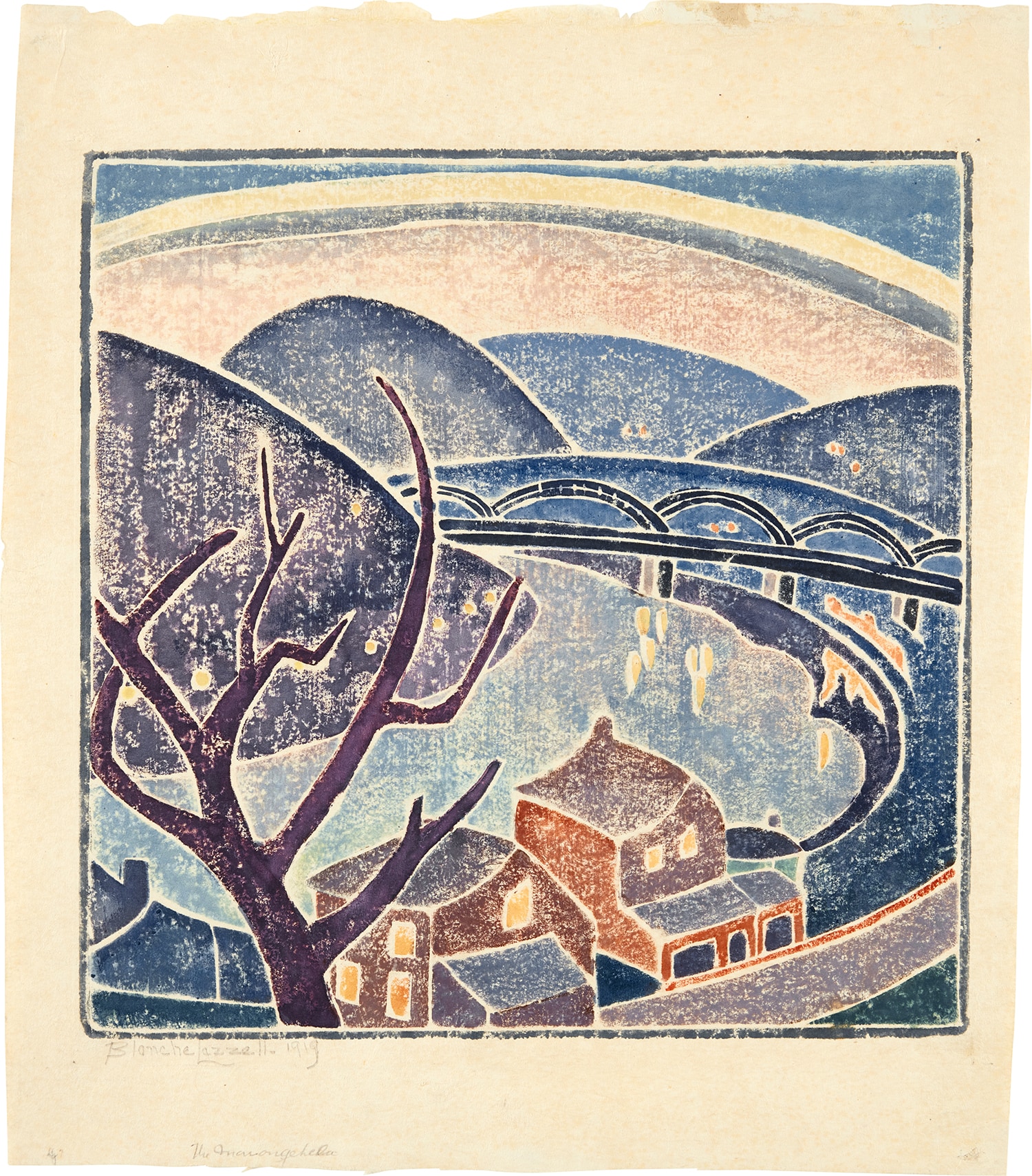



Property from a Distinguished Maryland Estate
11
Blanche Lazzell
The Monongahela (C. bl. 16)
1919
White-line woodcut in colors, on wove paper, with margins.
I. 12 x 12 in. (30.5 x 30.5 cm)
S. 15 3/4 x 13 3/8 in. (40 x 34 cm)
S. 15 3/4 x 13 3/8 in. (40 x 34 cm)
Signed, titled and dated in pencil, additionally numbered '20/2' in pencil on the reverse, Clarkson records 10 impressions based on the artist's record book, framed.